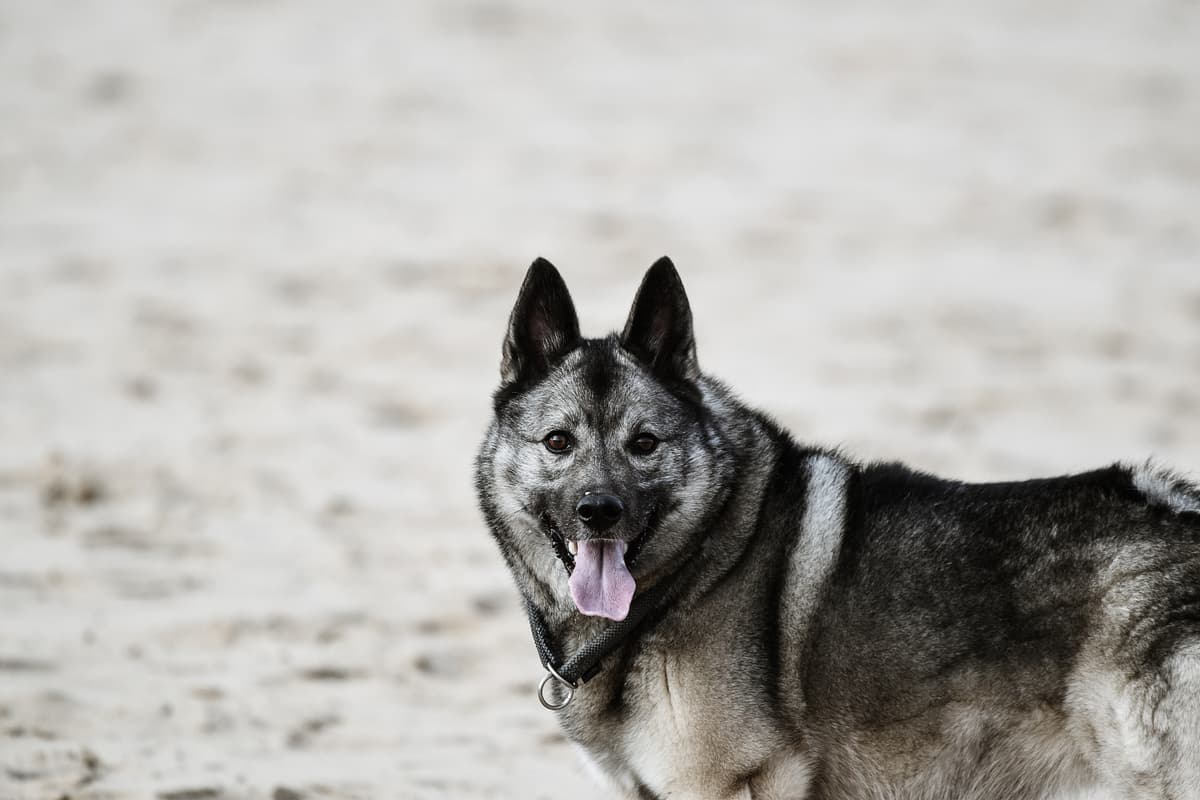Norwegian Elkhound vs English Bulldog
Discover the differences between Norwegian Elkhound and English Bulldog to make the best choice for your situation.
Try different breeds

Norwegian Elkhound
Energetic and loyal, this spitz breed thrives on adventure and close companionship. Bold yet affectionate, it makes a spirited watchdog and a loving family friend.

English Bulldog
Stocky, courageous, and affectionate, this breed charms with its wrinkled face and calm nature. Loyal and gentle, it thrives as a loving family companion.
Quick comparison
Medium
23–27 kg
Double coat, dense
12–15 years
20–25 kg
High energy
Medium
23–25 kg
Short, smooth
8–10 years
18–23 kg
Low activity needs
Personality & behavior
Compare the personality traits and behavioral characteristics of both breeds.
Norwegian Elkhound
Outgoing with family, reserved around strangers
Quick learner, responds well to training
High stamina, needs regular activity
Enjoys games and interactive playtime
Adjusts moderately to new environments
English Bulldog
Affectionate and gentle with family and children
Learns basic commands with some patience
Prefers lounging over vigorous physical activity
Enjoys play but tires fairly quickly
Adjusts well to most living environments
Care needs
Exercise, grooming, and daily care requirements
Norwegian Elkhound
Hip dysplasia, progressive retinal atrophy
English Bulldog
Brachycephalic syndrome, skin fold infections
Suitability
How well each breed fits different living situations and families
Norwegian Elkhound
Challenging for novices
Needs consistent training and firm guidance to thrive
Not ideal
Requires ample space and regular exercise to prevent restlessness
Highly suitable
Energetic and enjoys active outdoor lifestyles with involved owners
Good companion
Playful and tolerant but supervision is needed with very young children
Usually compatible
Can coexist with other pets if socialized early and consistently
Prone to anxiety
Dislikes being left alone for long periods and may develop problem behaviors
English Bulldog
Good option
Easygoing, low-maintenance nature suits owners with limited dog experience
Excellent fit
Moderate exercise needs and calm demeanor work well in small living spaces
Not ideal
Low stamina and breathing issues make them unsuited for high-activity lifestyles
Very suitable
Gentle, patient, and tolerant with young children when properly socialized
Usually compatible
Generally sociable but may need guidance with other pets, especially dogs
Not recommended
They struggle with long periods alone and are prone to separation anxiety
Breed strengths
What each breed excels at and their best qualities
Norwegian Elkhound
- Loyal and devoted to family
- Excellent watchdog instincts
- High stamina for outdoor activities
- Good with children and other pets
- Thick coat provides weather resistance
English Bulldog
- Affectionate with family members
- Generally good with children
- Low exercise requirements
- Minimal grooming needs
- Adaptable to apartment living
Challenges & considerations
Potential challenges and considerations for each breed
Norwegian Elkhound
- Strong prey drive can lead to chasing
- Can be independent and stubborn
- Needs consistent daily physical exercise
- Heavy seasonal shedding requires frequent grooming
- May bark excessively without proper training
English Bulldog
- Prone to respiratory problems
- High risk of overheating
- Susceptible to skin infections
- Can be stubborn during training
- Tends to drool frequently
Ready to choose your perfect breed?
Learn more about each breed or compare other breeds to find the perfect match for your lifestyle.
Discover more helpful tools
Make use of our other free tools to get the most out of your pet experience
